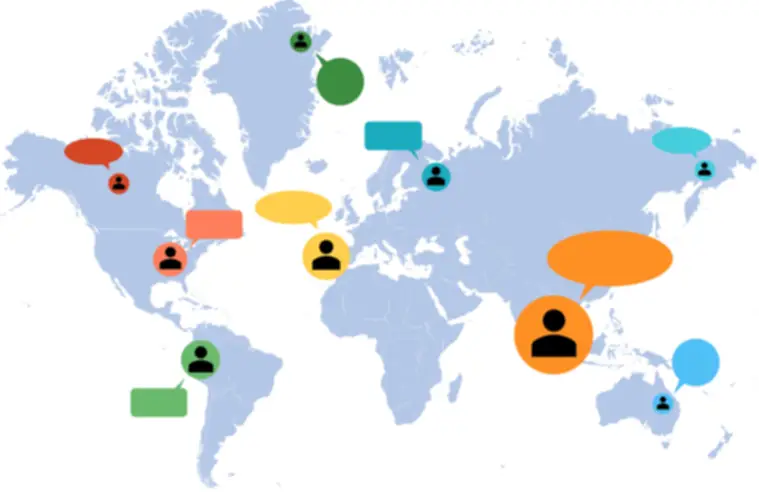Transform Your Business With AI Software Development Solutions https://www.globalcloudteam.com/ — be successful, be the first!
Step 2: Outline Microservices Boundaries
Empower every group to make choices concerning their microservices, including know-how stack, API design, and scaling methods. This method fosters autonomy, accelerates development, and ensures findings align with service-specific requirements. Each microservice ought to have its own data retailer, ideally a database tailored https://www.globalcloudteam.com/microservices-architecture-what-it-is-and-how-it-works/ to its wants. Avoid monolithic databases that may create dependencies between services.
How Microservices Help It Integration In Healthcare
By externalizing configurations, you acquire flexibility in managing different settings for various environments, corresponding to development, staging, and manufacturing, without needing to change jira code. It also helps dynamic configuration adjustments during runtime without restarting services. Tools like Spring Cloud Config and Consul are widely used to implement this pattern.
Challenges Of Microservices Structure
The finest means to ensure backward compatibility is by agreeing to contract services. While information can and should be shared by way of APIs across all your microservices, every one ought to have provisions to totally personal its data. If a quantity of microservices share the identical data storage, it will result in coupling between services—defeating the purpose of microservices altogether. These stakeholders include your government group however go all the way in which down the group.

Microservices’ modular structure limits the influence of failures, so when one service fails, others stay useful, enhancing system resilience. Each microservice should have its knowledge store, making it easier to scale and modify explicit service with out impacting the complete system. Routing of client requests should be dealt with without the data of business rules or domain logic. This should be taken care of very carefully, or you will be going through the coupling downside between the providers.
- The primary level is that these kinds of duties could be written in numerous languages by completely different teams elsewhere.
- Data-oriented microservices, however, are designed to deal with knowledge and database operations.
- With the assistance of a «tech stack,» groups can figure out which applied sciences work best for his or her service.
- In this blog, we’ll discover how AI is revolutionizing the sector, streamlining the event process, and boosting productivity for developers….
- Monolithic applications are considered all-in-one entities the place the entire application is built, examined and deployed as a single codebase.
Microservices is not any single commodity, it is primarily an architecture made up of several microservice suppliers inside a singular server unit. We shall be discussing their character as a whole and also the instances which necessitate their usage over all other container platforms. Microservices are all about decentralized, compartmentalized utility packages. Microservice functions are relatively simple to build, deploy, scale, preserve, and so forth. “Desired state,” a key concept in Kubernetes, allows self-healing and auto-upgrade functionality to be integral to the solution. For instance, suppose that your desired state is that 10 cases of a specific microservice (in a container pod) at version 1.1 ought to all the time be operating.
Domain-driven design (DDD) is a design principle that expresses an object-oriented model utilizing sensible rules and ideas. Specifically, it includes designing microservices around enterprise domains. Helping software architectures perceive different business domains enables them to give consideration to building microservices structure in a method they will understand properly. One of the important thing advantages of monolithic architecture is that it’s self-contained and unbiased from different functions.
While serverless is a gorgeous option for specific workloads, it’s unsuitable for all functions. Consider latency, execution limits, and the stateless nature of serverless capabilities when deciding whether or not to go serverless. Containers, corresponding to Docker, have revolutionized microservices deployment. With containerization, you can package every microservice and its dependencies into a light-weight, consistent setting.
The SOA mannequin works greatest for providers which might be largely transactional and reusable throughout massive software program systems. SOA is not as properly fitted to new or refactored code, or projects that contain speedy and steady development and deployment cycles — that is the place microservices shine. Containerization, facilitated by applied sciences like Docker, packages every microservice and its dependencies into a standardized container. Orchestration instruments, corresponding to Kubernetes, manage these containers, automatically scaling them up or down in response to varying workloads. This combination simplifies deployment and scaling, making it simpler to adapt to changing calls for. Each group might have possession of specific microservices or service clusters.
This speed facilitates a faster response to market demands and buyer suggestions. To forestall failures from affecting the total system, a circuit breaker monitors companies and isolates failures when necessary. This element improves resilience by stopping requests from going to a failing service, guaranteeing the application’s stability. RabbitMQ is kind of a messenger between applications that allows them to speak by way of a messaging queue.

Suppose, you must make certain changes in the fee gateway interface, you probably can separate that exact software alone and reinstate it into the stack after incorporating the needed changes. To understand the benefits of microservices architectures right now, it’s critical to know the place it began from. As growth speeds continued to increase, so did the necessity to transfer away from old and dysfunctional applications. These single autonomous units could not be easily modified, so any upgrades or augmentations to an utility have been sluggish and impacted the whole system. Simple adjustments to at least one piece of code may imply redeploying an entire new version of the software.
They handle request routing and might carry out tasks like load balancing and authentication. This follow centralizes the routing logic, easing developers’ service discovery burden. API gateways can even assist with versioning and price limiting, enhancing the person expertise. Microservices structure solves numerous major challenges that developers have confronted with their conventional monolithic options. However, improvement sprawl and alert fatigue can create their very own challenges. The key right here is to strike a balance by designing specialised services based on in-application functions.
In a monolithic system, scaling means scaling the whole software, which is resource-intensive. The elevated variety of service calls in a microservices structure can result in network latency, which could impression efficiency if not optimized properly. Due to decentralized knowledge, ensuring knowledge consistency across services can be challenging, especially during complex transactions that contain multiple providers. An API gateway routes requests to the appropriate microservices and serves as some extent of entry management, permitting you to regulate who can access which services. We have mentioned that particular person teams are assigned for specific companies, so there is not a have to share the code or information schemas.
So, if there’s a hiccup in one service, say a brief problem with the cost processor, the others can keep functioning. The Order Service can nonetheless finalize the order and notify the stock while the cost retries in the background. This modular and decentralized strategy helps the system gracefully deal with failures, ensuring a seamless purchasing experience. Containers, similar to Docker, bundle and deploy these microservices with container orchestration instruments like Kubernetes. RESTful APIs are extremely advantageous for microservices architecture simply because they require no set up on the client facet.
Monolithic functions are also difficult to scale, as scaling a selected perform would require scaling the whole application. Mastering CI/CD instruments like Jenkins, GitLab, or CircleCI helps streamline the deployment course of, enabling faster launch cycles and decreasing the danger of guide errors. CI/CD additionally helps automated testing, which ensures that modifications are completely validated earlier than they are deployed.
Soon after, it began converting its user-facing systems to microservices, completing the method in 2012. The monolithic structure consists of purposes built as large, autonomous models. Such purposes can’t be modified easily because the complete system is heavily interconnected. Even a tiny modification to the code is prone to require creating and deploying a completely new model of the software program.